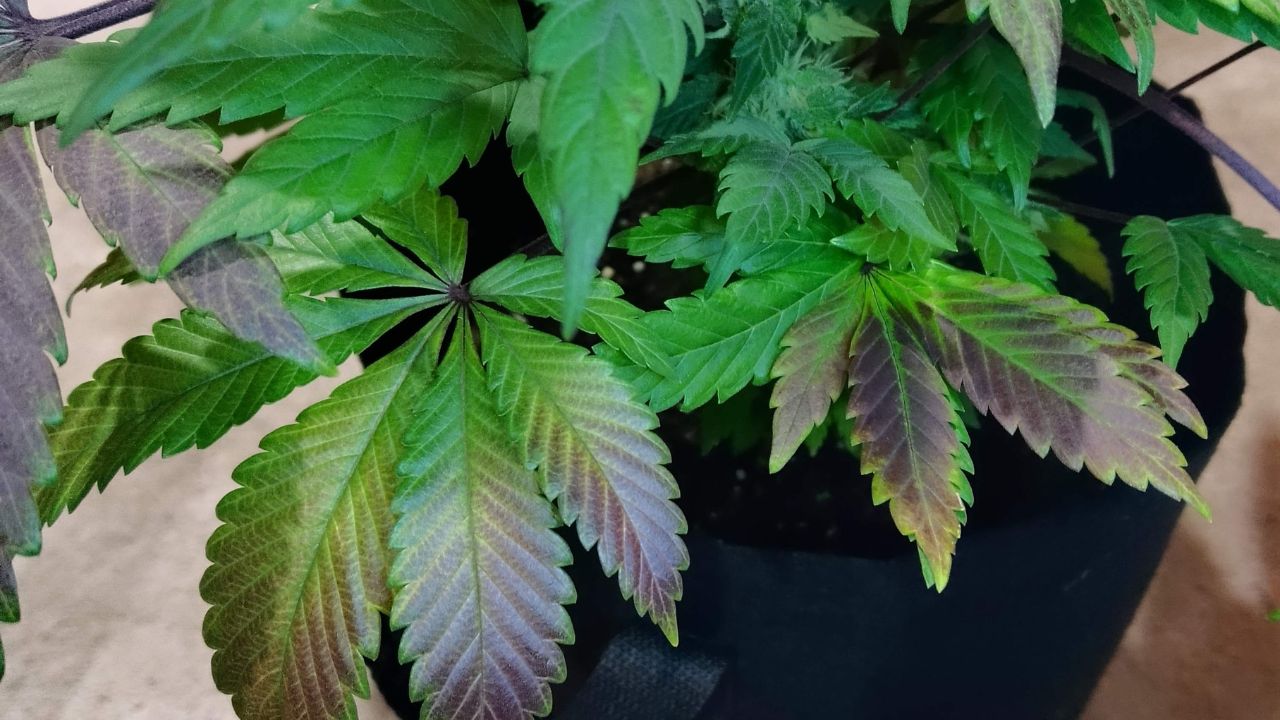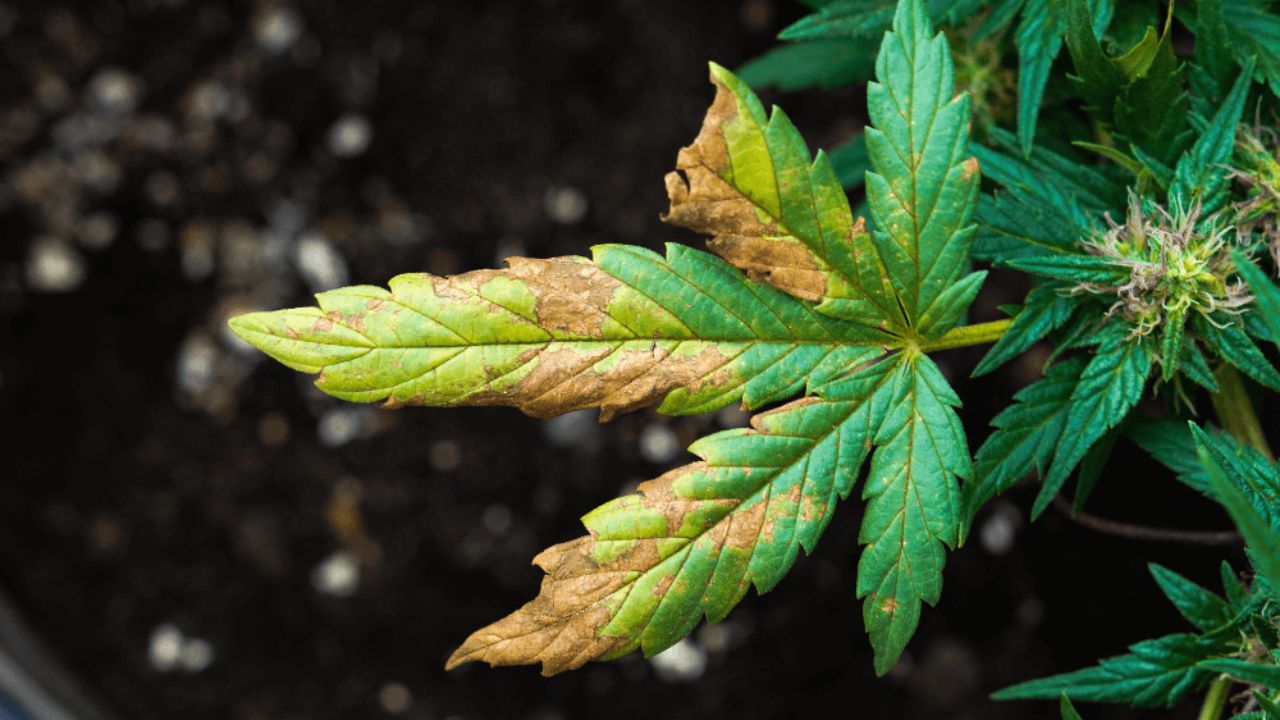Growing cannabis can be a rewarding experience, yet it can also be full of challenges. One of the most common issues cannabis growers face is nutrient deficiencies. Phosphorus deficiency is one of the most harmful nutrient deficiencies that can affect your plants. It can have a detrimental effect on your cannabis plants’ development and productivity. You will learn how to recognize and cure a cannabis phosphorus shortage from this blog post.
Cannabis plants require phosphorus, an important nutrient, for proper growth and development. It is responsible for promoting root development, plant growth, and increased flower production. Phosphorus deficiency occurs when your cannabis plants are not receiving enough phosphorus to support these necessary activities.
How to Identify Phosphorus Deficiency
Your cannabis plants will manifest some visible signs if they are experiencing phosphorus deficiency. Cannabis plants require phosphorus, an important nutrient, for proper growth and development.
The discolored leaves may develop brown spots and start wrinkling. Your plants may also experience stunted growth, thinning stems, and reduced flower development, which negatively impacts cannabis phosphorus deficiency symptoms yield.
Causes of Phosphorus Deficiency

Understanding the causes of phosphorus deficiency can help you prevent it in the future. Over-fertilization with nitrogen can cause phosphorus deficiency because it can create an imbalance between nutrients. Soil pH can also be a culprit of phosphorus deficiency; acidic soils can make it more difficult for plants to absorb phosphorus. High humidity and cool temperatures can reduce the plant’s ability to take up nutrients, including phosphorus.
How to Remedy Phosphorus Deficiency
To cure phosphorus deficiency in cannabis plants, you need to address the root of the problem. One quick solution is to apply phosphorus-rich fertilizers, which contain plenty of potassium and magnesium. Adding organic amendments such as bone meal, rock phosphate, and bat guano will provide your plants with a steady supply of phosphorus. If your soil pH is acidic, add lime to neutralize it and improve nutrient uptake. Control the humidity and temperature in your grow space to promote healthy nutrient uptake.
Causes of Cannabis Phosphorus Deficiency
Phosphorus is an essential macronutrient for cannabis growth, responsible for the plant’s development, root growth, and the formation of essential oils responsible for flavor and aroma. However, many factors can cause phosphorus deficiency, including:
Soil pH imbalances: Cannabis plants require phosphorus, an important nutrient, for proper growth and development.
Over-fertilization: Overuse of fertilizers can create a nutrient imbalance that affects the plant’s ability to absorb phosphorus, leaving it deficient.
Under-fertilization: Plants require sufficient nutrients to grow, and when there is insufficient fertilizer, the plant’s ability to absorb nutrients reduces, leaving it deficient in phosphorus.
Root damage: Any damage to the roots can limit the plant’s ability to absorb phosphorus.
Symptoms of Cannabis Phosphorus Deficiency

Phosphorus deficiency symptoms are usually visible in the lower part of the plant. Here are some of the telltale signs of a cannabis phosphorus deficiency:
Yellowing leaves: The first indications of phosphorus deficiency begin on the lower leaves as they start to yellow or turn a reddish-purple color.
Slow growth: When a cannabis plant lacks phosphorus, it struggles to grow as it would under optimal conditions.
Stunted stems: The stems of the cannabis plant become weaker, and the plant as a whole becomes stunted.
Reduced bud production: Phosphorus deficiency can limit the plant’s ability to produce buds as it usually would.
How to Remedy Cannabis Phosphorus Deficiency
Supplementing phosphorus is the simplest method to remedy phosphorus deficiency in cannabis plants. Here are some ways you can increase the phosphorus levels of your plant:
Adjust soil pH: Test the soil pH levels and adjust them accordingly to their ideal range.
Reduce stress: Reducing stressors such as overwatering, over-fertilization, pests, and diseases can help your plant absorb the nutrients it needs.
Add phosphorus: Use a phosphorus-rich fertilizer to supplement the phosphorus levels of your plant. Use a fertilizer specific to cannabis growth and follow manufacturer instructions for proper use.
Prevention Tips for Cannabis Phosphorus Deficiency
Prevention is always better than cure, and you can avoid phosphorus deficiency in your cannabis plants by:
Monitoring pH levels: Ensure your soil has a pH level of 6.0 to 7.0 to optimize nutrient absorption.
Proper watering and feeding: Provide the necessary nutrients in the right quantity and quality for optimal growth.
Keeping pests and diseases at bay: A plant under stress from pests and illnesses is less able to absorb nutrients.
Conclusion
To maximize your cannabis growth and yield, you need to pay close attention to your plant’s symptoms and treat them accordingly.It is a common issue that can significantly affect the quality and quantity of your cannabis crop.
By understanding the causes, signs, and appropriate remedies for phosphorus deficiency, you can quickly nurse your plants back to health and produce high-quality cannabis plants. Remember, prevention is better than cure; always maintain ample phosphorus levels in your plant’s soil, and avoid over-fertilization with other nutrients.
FAQ:
What is Cannabis Phosphorus Deficiency?
Cannabis phosphorus deficiency occurs when marijuana plants are not receiving an adequate amount of phosphorus, an essential nutrient for their growth and development. This deficiency can manifest as distinct symptoms affecting the plant’s leaves and overall health.
What are the Symptoms of Phosphorus Deficiency in Cannabis Plants?
Common symptoms include:
- Dark green or purple leaves.
- Slow growth.
- Development of purplish stems.
- The appearance of dark spots on older leaves.
Additionally, the plant may exhibit poor flowering and reduced bud development.
What Causes in Cannabis Plants?
Various factors, including imbalanced soil pH, poor nutrient availability, overwatering or underwatering, and inadequate fertilization, can cause phosphorus deficiency. It’s crucial to maintain proper growing conditions to prevent phosphorus what causes cannabis phosphorus deficiency deficiencies.
How can I Diagnose in my Cannabis Plants?
Carefully examine the plant’s leaves for the symptoms mentioned above. Conduct soil tests to assess nutrient levels and pH. Consulting with experienced growers or horticulturists can also help in making an accurate cannabis phosphorus deficiency test diagnosis.
How can I Treat Cannabis Phosphorus Deficiency?
Addressing the root cause is essential. Adjust the soil pH to the optimal range (around 6.0 to 7.0) and ensure proper nutrient levels by using a balanced fertilizer with sufficient phosphorus. Gradual improvements should be visible within a week or two after treatment.

